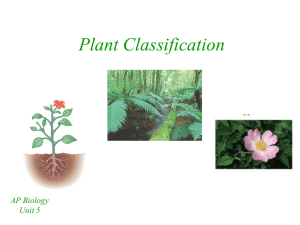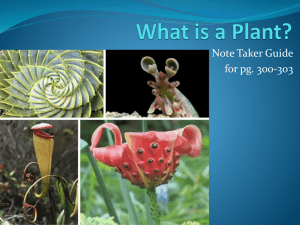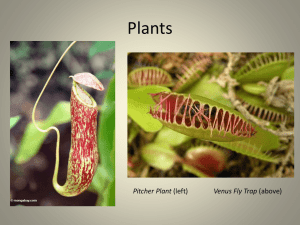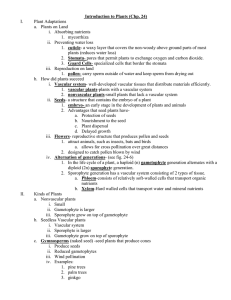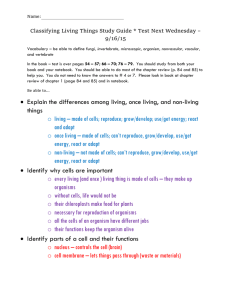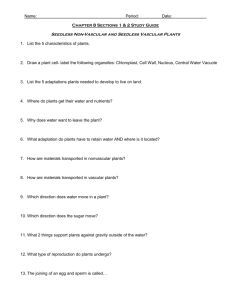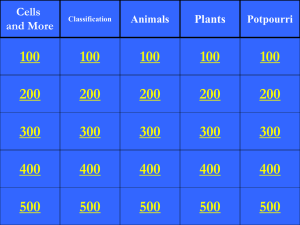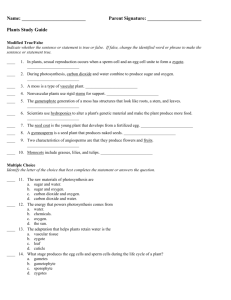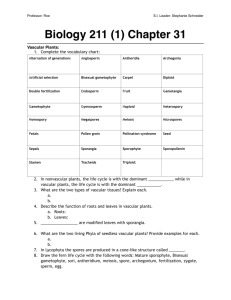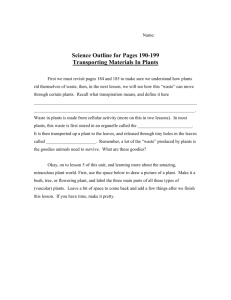Introduction to Plants Notes
advertisement
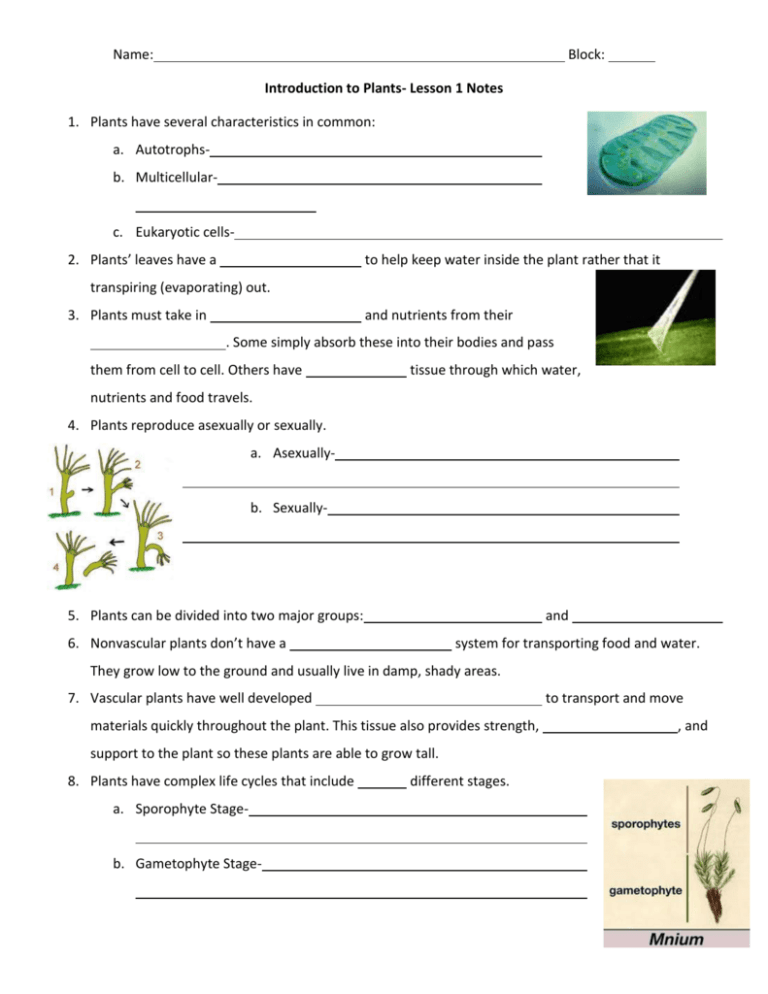
Name: Block: Introduction to Plants- Lesson 1 Notes 1. Plants have several characteristics in common: a. Autotrophsb. Multicellular- c. Eukaryotic cells2. Plants’ leaves have a to help keep water inside the plant rather that it transpiring (evaporating) out. 3. Plants must take in and nutrients from their . Some simply absorb these into their bodies and pass them from cell to cell. Others have tissue through which water, nutrients and food travels. 4. Plants reproduce asexually or sexually. a. Asexually- b. Sexually- 5. Plants can be divided into two major groups: and 6. Nonvascular plants don’t have a system for transporting food and water. They grow low to the ground and usually live in damp, shady areas. 7. Vascular plants have well developed to transport and move materials quickly throughout the plant. This tissue also provides strength, support to the plant so these plants are able to grow tall. 8. Plants have complex life cycles that include a. Sporophyte Stage- b. Gametophyte Stage- different stages. , and Name: Date: Block: Introduction to Plants- Lesson 1 Notes KEY 1. Plants have several characteristics in common: a. Autotrophs-make their own food using photosynthesis (producer) b. Multicellular-cells are organized into tissues c. Eukaryotic cells-(cells with a nucleus) also have cell walls and a large vacuole 2. Plants’ leaves have a cuticle to help keep water inside the plant rather that it transpiring (evaporating) out. 3. Plants must take in water and nutrients from their surroundings. Some simply absorb these into their bodies and pass them from cell to cell. Others have vascular tissue through which water, nutrients and food travels. 4. Plants reproduce asexually or sexually. a. Asexually-will be identical to the parent. Happens through tubers, runners or budding b. Sexually-fertliitation occurs when a sperm cell unites with an egg cell. The fertilized egg is called a zygote. 5. Plants can be divided into two major groups: vascular and nonvascular 6. Nonvascular plants don’t have a tubular system for transporting food and water. They grow low to the ground and usually live in damp, shady areas. 7. Vascular plants have well developed vascular tissue to transport and move materials quickly throughout the plant. This tissue also provides strength, stability, and support to the plant so these plants are able to grow tall. 8. Plants have complex life cycles that include 2 different stages. a. Sporophyte Stage-this stage produces the spores. The spore then develops into the next stage… b. Gametophyte Stage-produces sperm and egg cells then the cycle starts again.
